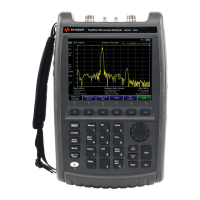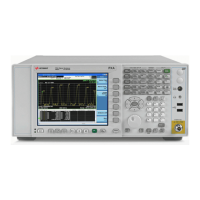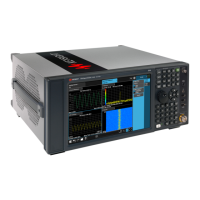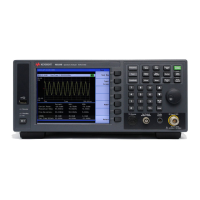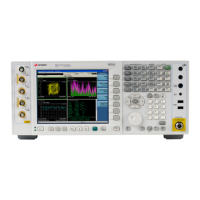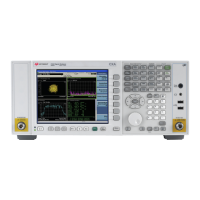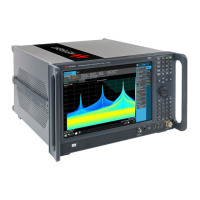16- 10 Keysight N9912-90001 User’s Guide
Data Analysis Features
All about Markers
16-
After pressing Enter, four markers are automatically created to find the first
negative or positive bandpass over the displayed frequency range.
Bandwidth Search can be used ONLY with Log Mag display format.
The following six values are displayed for Bandwidth Search:
— BW: Width of the filter. (marker 2 freq) minus (marker 3 freq).
— Center: Marker 4 frequency. Mathematical midpoint between marker 2 and
marker 3.
— Q: Center Frequency / Bandwidth.
— Loss: Marker 1 amplitude.
— Left: Frequency of marker 2 or 3 (to left of marker 1).
— Right: Frequency of marker 2 or 3 (to right of marker 1).
—Press Back
to return to the previous menu.
Press Peak Search
then choose from the following:
— Peak
Moves the active marker to the HIGHEST amplitude data point of the
trace. Peak Excursion value is ignored. In SA Mode, the LO feed-through
signal (0 Hz) is also ignored.
— Next Peak
Moves the active marker to the next highest amplitude peak from
where it currently resides.
— Peak Left
Moves the active marker to the next data point to the left that
meets the ‘Peak’ criteria. When no data points to the left meet the ‘Peak’
criteria, the marker does not move.
— Peak Right
Moves the active marker to the next data point to the right that
meets the ‘Peak’ criteria. When no data points to the right meet the ‘Peak’
criteria, the marker does not move.
The following applies to DTF Measurements ONLY:
— More then:
— Track Peaks ON OFF
When Track Peaks is ON, markers will find the new
peak with every sweep. While in this Mode, the markers can NOT be turned
OFF or moved.
— Find 3 Peaks
Three markers are created and find the highest peaks (faults)
on the trace.
What Is a ‘Peak’
You define what the FieldFox considers a “peak” by setting the Peak Threshold
and Peak Excursion.
These two peak criteria settings are set individually for each trace and for each
mode (CAT, SA, or NA).
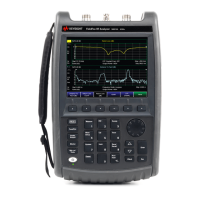
